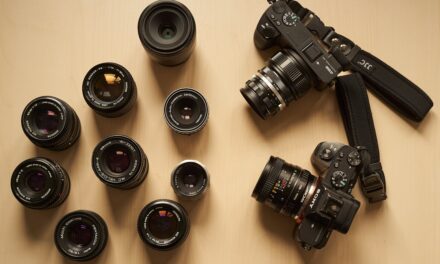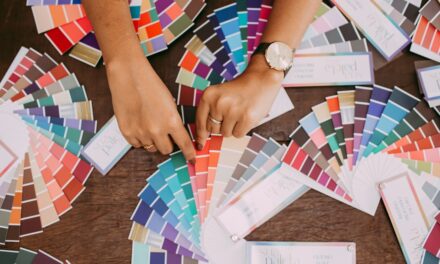In an age where creativity flourishes and artistic expression is celebrated, the importance of using safe and non-toxic art supplies cannot be overstated. As artists, educators, and parents, we have a responsibility to ensure that the materials we use are not only conducive to creativity but also safe for our health and the environment. The rise in awareness regarding the potential hazards of certain art materials has led to a growing demand for products that are free from harmful chemicals.
This shift is particularly crucial for children, who are often more susceptible to the adverse effects of toxic substances. The art world is vast and varied, encompassing a multitude of mediums and techniques. From drawing and painting to crafting, the materials we choose can significantly impact our health and well-being.
Non-toxic art supplies are designed to minimise risks while still allowing for vibrant expression and creativity. As we delve into the various categories of safe art materials, it becomes evident that there is a wealth of options available that do not compromise on quality or artistic potential. This article aims to explore these options, providing insights into non-toxic drawing materials, safe painting supplies, child-friendly crafting materials, and eco-friendly alternatives.
Summary
- Safe and non-toxic art supplies are essential for children’s health and well-being
- Non-toxic drawing and colouring materials include water-based markers and crayons
- Safe painting supplies include water-based paints and natural bristle brushes
- Child-friendly crafting materials should be free from harmful chemicals and small parts
- Eco-friendly and sustainable art supplies help reduce environmental impact and promote sustainability
Non-Toxic Drawing and Colouring Materials
When it comes to drawing and colouring, the market is brimming with non-toxic options that cater to artists of all ages. Pencils, crayons, markers, and pastels are essential tools for any artist, and fortunately, many brands now offer products that are free from harmful chemicals such as lead, phthalates, and heavy metals. For instance, coloured pencils made from natural pigments and sustainable wood are not only safe but also provide rich, vibrant colours that can inspire creativity in both children and adults alike.
Water-based markers have gained popularity as a non-toxic alternative to traditional solvent-based options. These markers are easy to clean up and often wash out of clothing and skin with minimal effort. Additionally, many brands have begun to produce crayons made from soy wax or beeswax instead of paraffin, which is derived from petroleum.
These natural alternatives not only reduce environmental impact but also ensure that young artists can express themselves without the worry of inhaling harmful fumes or ingesting toxic substances.
Safe and Non-Toxic Painting Supplies
Painting is a beloved medium that allows for boundless creativity, yet it can also pose risks if the wrong materials are used. Fortunately, there is a growing selection of safe and non-toxic paints that cater to artists of all skill levels. Acrylic paints made from natural pigments and water-based formulas are an excellent choice for both beginners and seasoned artists.
These paints offer vibrant colours and quick drying times without the harmful solvents found in traditional acrylics. Watercolour paints have also seen significant advancements in non-toxic formulations. Many brands now offer watercolours that are free from toxic dyes and heavy metals, making them suitable for children and adults alike.
These paints can be easily mixed with water to create a range of hues and effects, allowing for experimentation without the fear of exposure to harmful chemicals. Additionally, there are non-toxic oil paints available that utilise natural oils and pigments, providing artists with a safe alternative to conventional oil paints that often contain hazardous solvents.
Child-Friendly Crafting Materials
Crafting is an integral part of artistic exploration, particularly for children who thrive on hands-on activities. The good news is that there is an abundance of child-friendly crafting materials that prioritise safety without sacrificing creativity. For instance, glue sticks made from non-toxic ingredients are widely available, allowing children to engage in various projects without the risk of inhaling harmful fumes or coming into contact with irritating substances.
Moreover, there are numerous options for non-toxic adhesives, such as PVA glue or natural rubber-based glues, which are safe for young hands. Crafting kits designed specifically for children often include materials that are free from harmful chemicals, ensuring that little ones can explore their creativity with peace of mind. From biodegradable glitter to natural dyes for fabric projects, the crafting world is evolving to embrace safer alternatives that encourage imaginative play while safeguarding health.
Eco-Friendly and Sustainable Art Supplies
As awareness of environmental issues continues to grow, so too does the demand for eco-friendly and sustainable art supplies. Artists are increasingly seeking materials that not only minimise harm to their health but also reduce their ecological footprint. Many companies now produce art supplies using recycled materials or sustainably sourced resources, allowing artists to create with a clear conscience.
For example, sketchbooks made from recycled paper or bamboo sketch pads offer an environmentally friendly alternative to traditional paper products. Additionally, there are paints made from plant-based ingredients that are biodegradable and free from harmful chemicals. By choosing eco-friendly art supplies, artists can contribute to a more sustainable future while still enjoying the creative process.
This shift towards sustainability not only benefits individual artists but also fosters a broader cultural change towards responsible consumption in the art community.
Tips for Choosing Safe and Non-Toxic Art Supplies
Selecting safe and non-toxic art supplies requires careful consideration and a bit of research. One of the most effective ways to ensure the safety of art materials is to look for certifications or labels indicating that products meet specific safety standards. For instance, products bearing the AP (Approved Product) seal from the Art & Creative Materials Institute (ACMI) signify that they have been tested for toxicity and are deemed safe for use.
Additionally, it is essential to read product labels carefully. Manufacturers often provide information about the ingredients used in their products, allowing consumers to make informed choices. When shopping for art supplies, consider opting for brands known for their commitment to safety and sustainability.
Engaging with local art supply stores can also be beneficial; knowledgeable staff can provide recommendations based on safety standards and product performance.
Importance of Non-Toxic Art Supplies for Children
The significance of using non-toxic art supplies for children cannot be overstated. Young artists are naturally curious and often explore their creativity through tactile experiences involving various materials. However, their developing bodies and immune systems make them more vulnerable to the effects of toxic substances found in some art supplies.
By providing children with non-toxic options, parents and educators can foster a safe environment where creativity can flourish without compromising health. Moreover, introducing children to non-toxic art supplies instils an early awareness of safety and environmental responsibility. As they engage in creative activities using safe materials, they learn about the importance of making informed choices regarding the products they use.
This foundational understanding can carry over into other aspects of their lives as they grow older, promoting a culture of health-consciousness and environmental stewardship.
Conclusion and Recommendations for Safe Art Supplies
In conclusion, the world of art supplies has evolved significantly in recent years, offering a plethora of safe and non-toxic options for artists of all ages. From drawing materials to painting supplies and crafting essentials, there is no shortage of products designed with health and safety in mind. As we navigate this vibrant landscape of creativity, it is crucial to prioritise non-toxic materials that allow us to express ourselves freely while safeguarding our well-being.
For those seeking recommendations on safe art supplies, consider exploring brands known for their commitment to quality and safety standards. Look for products with certifications from reputable organisations such as ACMI or those labelled as non-toxic by independent testing agencies. By making informed choices about the materials we use, we can create a nurturing environment for creativity that respects both our health and the planet.
Ultimately, embracing safe art supplies not only enhances our artistic experience but also contributes to a brighter future for generations to come.
If you are interested in exploring art beyond just supplies, you may want to read about the National Museum of Women in the Arts in Washington, D.C., USA. This article provides an introduction to this prestigious museum dedicated to showcasing the work of female artists. It offers a unique perspective on the art world and highlights the importance of recognising and celebrating women’s contributions to the field. It is a fascinating read for anyone passionate about art and its diverse representations.
FAQs
What are safe and non-toxic art supplies?
Safe and non-toxic art supplies are materials that are free from harmful chemicals and substances that could be harmful to children if ingested or inhaled. These supplies are specifically designed to be safe for use by children and are often labelled as non-toxic.
Why is it important to use safe and non-toxic art supplies for children?
Children are more susceptible to the harmful effects of chemicals and toxins, so it is important to use safe and non-toxic art supplies to protect their health and safety. These supplies are designed to be safer for children to use, reducing the risk of exposure to harmful substances.
What are some examples of safe and non-toxic art supplies for children?
Examples of safe and non-toxic art supplies for children include water-based paints, non-toxic markers and crayons, natural clay and playdough, and non-toxic glue and adhesives. It is important to look for products that are specifically labelled as non-toxic.
How can parents and caregivers identify safe and non-toxic art supplies?
Parents and caregivers can identify safe and non-toxic art supplies by looking for products that are labelled as non-toxic and specifically designed for use by children. It is also important to read the product labels and check for any safety certifications or approvals.
Are there any specific brands or products that are recommended for safe and non-toxic art supplies for children?
There are several reputable brands that offer safe and non-toxic art supplies for children, including Crayola, Faber-Castell, and Melissa & Doug. It is important to look for products that are specifically labelled as non-toxic and designed for use by children.



